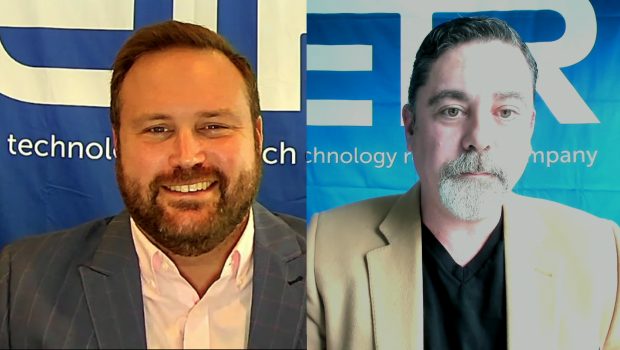Supercloud is an inevitable, natural evolution in enterprise technology, say ETR analysts
The supercloud concept aims to enhance resilience, scalability and security in the cloud space.
Since the annual spend on cloud infrastructure is expected to grow at almost 70% CAGR over the next three years, supercloud seeks to take the cloud to the next level, according to Erik Bradley (pictured, right), chief strategist and director of research at Enterprise Technology Research.
“From my own perspective, and then also speaking to the IT [decision makers] that we interview on a regular basis, this is just a natural evolution,” Bradley said. “Supercloud is … a way to define, operantly, the next generation, the continued iteration and evolution of the cloud and what it needs to be. If you want to call it metacloud, supercloud, it doesn’t matter. The point is that we’re trying to define the next layer; the next future of work.”
Bradley and Daren Brabham (pictured, left), senior director analyst at ETR, spoke with theCUBE industry analyst Dave Vellante at the Supercloud2 event, during an exclusive broadcast on theCUBE, SiliconANGLE Media’s livestreaming studio. They discussed why supercloud is the next big thing in the enterprise sector. (* Disclosure below.)
What is a ‘true’ supercloud provider?
Industry players such as Cloudflare Inc. have started to craft a name for themselves in the cloud space, according to Bradley, who said that Cloudflare is emerging as a real supercloud provider based on its cloud, networking and networking aspects.
“For me, the definition of a true supercloud provider can’t just be one instance,” he pointed out. “You have to have multiple. So it’s not just the cloud; it’s networking aspect on top of it. It’s also security. And to me, Cloudflare is the only one that has all of it. They actually have the ability to offer all of those things.”
Supercloud aims to erase the stigma associated with multicloud and the associated complexities, according to Bradley.
“Basically, a senior developer IT architecture and DevSecOps says he uses the term all the time,” he stated. “And the reason he uses the term is because multicloud has a stigma attached to it when he is talking to his business executives. The stigma is because it’s complex and it’s expensive. So he switched to supercloud to better explain to his business executives and his CFO and CIO what he’s trying to do.”
Based on the IT complexities within the enterprise world, supercloud helps manage it in a cleaner way, according to Brabham. Plus, it helps control complicated governance, security and regulatory issues.
“I think large multinational companies in certain areas like finance, online e-commerce, or things that need real-time data, they inherently are going to have a very complex environment that’s going to need to be managed in some kind of cleaner way,” he noted. “And I think that’s why we’re seeing this need to have sort of this supercloud concept — to juggle all this, to wrangle all of it.”
A paradigm shift to a meta abstraction layer
Through a meta abstraction layer, the engineering complexity is driven away. Therefore, supercloud streamlines this idea, as showcased by Snowflake Inc., according to Brabham.
“I think Snowflake has continued to kind of keep that mantle to a degree, and we see other tools trying to do that, but that’s all it is,” he pointed out. “It’s a paradigm shift back to this kind of meta abstraction layer that kind of simplifies what is the reality — that you need a complex multi-use case, multi-region way of doing business. And it sort of reflects the reality of that.”
Data and analytics are playing a pivotal role in showcasing the supercloud narrative, according to Brabham, who said that Snowflake has broken ground by making businesses more flexible.
“With data and analytics, for instance, a lot of organizations were trying to bring the data closer to the business,” he stated. “That’s where we saw self-service analytics coming in. And tools like Snowflake, what they did was they helped point to different databases, they helped unify data and organize it in a single place that was, in a sense neutral, away from a single cloud vendor or a single database.”
The need for standards across clouds is dependent on the size and complexity of the underlying business, according to Bradley, who said that anything that has real-time data metrics necessitates the supercloud idea.
“At the very large enterprise, there is complexity; there is not only complexity in the compute and actually deploying the applications, but the governance and the security around them,” he stated. “But for lower end or business use cases, and for smaller businesses, it’s a little less necessary. You certainly don’t need to have all of these.”
Visit theCUBE’s Supercloud2 event page to watch full episodes on demand.
(* Disclosure: This is an editorial segment. While theCUBE is a paid media partner for Supercloud2, the sponsors for theCUBE’s event coverage do not have editorial control over content on theCUBE or SiliconANGLE.)








Gloss